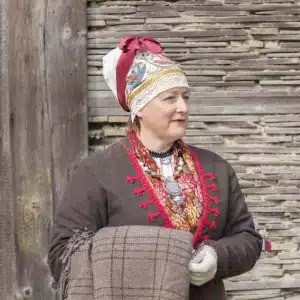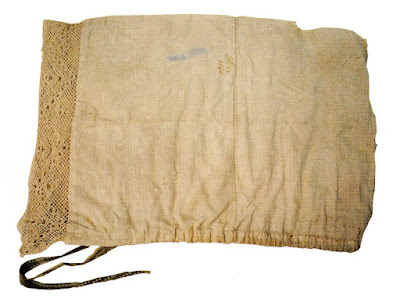Hello all,
Today I will continue my series on Estonia by talking about Pärnumaa.
Estonia is divided culturally into 4 macro-regions: Lõuna-Eesti - South Estonia, Põhja-Eesti - North Estonia, Lääne-Eesti - West Estonia, and Saared - The Islands. It is further divided into 15 districts, or counties, and about 105 kihelkonna vald, usually translated as parishes. Recently administrative districts and municipalities have changed, but I will follow the more traditional divisions, as most of my sources on traditional cultures do so, and as in so many nations, contemporary administrative divisions are not based on traditional culture.
My previous articles on Estonia have mostly been on South Estonia, which speaks its own language, related to but distinct from Standard Estonian, which is based on the dialect of Talinn. So far, there are two exceptions: my article on Virumaa, which is in North Estonia, and my article on the island of Muhu, which is in the Islands.
Pärnumaa, the subject of this article is in West Estonia, along with Läänemaa.
Pärnumaa is shown on this map in orange, in the lower left, centered around the city of Pärnu on the gulf of the same name, off the Gulf of Riga.
The parishes of Halliste and Karksi will not be covered in this article because they form part of the cultural area of Mulgimaa, in South Estonia, which I have already written an article about. The islands of Kihnu and Ruhnu will be covered with the Islands.
The image at the head of the article is of a couple from the parish of Pärnu-Jaagupi, and illustrates some of the distinctive characteristics of West Estonia.
Särk
The chemise of this region is similar to that of South Estonia, with full sleeves, cuffs, and a narrow epaulette sewn between the front and rear fields. Embroidery was in topwinder, hemstitching and other stitches. This example is from Mihkli parish.
Colored embroidery was sometimes found, as in this example from Audru. Crochet lace was often added.
And Tõstamaa.
Collars were often fairly simple, and this is because dickies with large elaborate collars were often worn. These were made as a separate garment for ease of laundering and maintenance. They usually had wide lace edging and often colorful embroidery.
Lahtkrae
Skirts are gathered into a waistband, and as in most parts of Estonia were usually made of vertically striped wool.
However, occasional skirts were found in plain or horizontal stripes.
This example is from Vandra.
And Pärnu-Jaagupi.
But perhaps the most distinctive skirts of this region are those with vertical stripes and a horizontal panel at the bottom, often decorated with galloon and prairie points.
This example from Audru is made of ikat cloth, and a red hem panel with appliqued knitted ornament.
Here is another example from Pärnu.
These were held in place with inkle woven sashes wrapped around the waist. These are woven with many many different designs. These types of sashes are widespread around the Baltics and beyond.
Vöö
Põll
Aprons are a simple rectangle, gathered into a waistband. They are made of linen, with openwork and/or simple western style redwork. They were also made of printed material, or exceptionally of brocade.
Loose pockets were worn at the waist, either of patchwork or embroidered.
Stockings for everyday were dark colored or white, with some knitted openwork.
Dress stockings were of two kinds. Some resembled those of Viljandimaa, being of natural white or black wool with embroidered designs. Here are examples from Tõstamaa.
Saarde
Alternatively, they might be knitted with designs in colored yarn, similar to those worn in the Islands. Examples from Mihkli.
Pärnu-Jaagupi
Stockings were always secured around the top edge with finger braided garters, . These sometimes were fitted with tassels made from strips of scrap cloth.
At need, shoes woven of birch or linden bark would be worn. These, like the leather moccasins, were worn over a much larger area, from Scandinavia down to Ukraine.
For dress occasions, open topped crowns would be worn. Here are some examples from Vändra. I have not found evidence for these any further west.
As you can see, decorative shoulder shawls were sometimes worn in this area. This is a mid 1800s fashion that came to West Estonia likely from Sweden.
Married women, of course, put their hair up and then wore a headdress over it.
Here is a woman from Tõstamaa showing us how it is done.
One of the options for headgear is the tanu, shown here above. The tanu is made of linen and is taller than what we saw for South Estonia. It usually has a ribbon tied around it in a bow, as we see here. It can be plain linen with a lace border, or it may also be embroidered, as in North and South Estonia.
Also from Tõstamaa.
In Mihkli, the tanu were made tall and narrow, and perched on the top of the head with a strap that tied under the chin. I would assume that the hair was originally still put up in a topknot and secured with a pin, but the modern photos that I have seen all have loose hair hanging down. This is likely an oversight due to ignorance, as I have seen such photos from many places.
Laimüts or Kabimüts
Another option for headgear, likely originating later. These are hard shelled headwear covered with silk, similar to that worn in North Estonia, except where those were high and domed, these were made with a flatter back with a sharper edge. The shape varied from one parish to another. I have not found evidence of these from every parish.
Mihkli
Tõstamaa
Vändra
Here we again see modern models with their hair sloppily hanging out.
Here is an older photograph with the hair properly put up.
Talvemüts
Besides these, for colder weather they wore fur caps.
In this region there were two kinds. Some were round, and were essentially the same as those worn further east.
Others were sewn with a square top, similar to the Polish rogatowka.
Netsmüts
There was one more type of cap. This was a later invention, and was crocheted out of colorful yarn, often with a thick tasseled front edge. Here are examples from Tori.
Separate bodices, or vests, were apparently only worn by unmarried girls.
Married women wore short jackets, sometimes of a very similar cut to the above garment, but with sleeves. They came only to the waist, with or without a peplum. There were two main types. The older were a shortened form of the pikk-kuub, the long overcoat. These were made of the same heavy wool, with sleeves sewn on at right angles, and using a similar type of red cord ornament, and no peplum, although they might be flared at the waist.
The newer type was based on the Spencer jacket, which was in fashion all over Europe. These had cap sleeves in the modern fashion, often puffed at the shoulder in the leg-of-mutton style, usually had a sewn on peplum, and commonly no cord ornament.
The particular style varied somewhat with the parish and time period. One can find intermediate examples as well.
Some examples of the old type:
Tõstamaa
Audru
Pärnu-Jaagupi
Pärnu
Mihkli
This example from Häädemeeste seems to be somewhat of a hybrid, old style kampsun with modern cap sleeves, or perhaps whoever sewed the garment did not wish to make the traditional sleeves.
In Vändra, while both of the above were used at various times, they also had another type, the Jakk.
This was taken from popular fashion of the late 19th century, and resembles a blouse or shirtwaist, usually made from printed cloth.
This is a long overcoat of heavy dark homespun wool, ornamented with red cord, and worn by both men and women over all of Eastern Europe. Those typical of this region often had a horizontal ornament near the hem of the side seam. In Estonia, these were often pleated at the hip.
Häädemeeste
Audru
Large heavy rectangular wool wraps were worn here, as in all of the Baltic States. Here they were usually woven in plaids.
Rüü
This is another garment which is widespread over Eastern Europe. It is an overcoat much like the pikk-kuub, but made of linen. It is also worn by both men and women, and seems to never have any adornment. This garment is meant for moderate weather.
This garment was also widespread. It is an overcoat made of sheepskin, with the fleece on the inside. It is very warm, but also expensive, being made of a half dozen sheep. The collar, cuffs, front, and hips were ornamented with applique of thin, maroon dyed kidskin.
Kindad
Mittens and gloves are an integral part of Estonian costume for both men and women, knitted with colorful designs, or embroidered after knitting. They were often tucked into the sash when not worn. They were a common gift to men from important women in their lives.
Jewelry
Shirts and chemises were held closed by simple annular ring brooches.
Larger, more ornamented ring brooches were worn for decoration. These were accompanied by necklaces, silver rings and other pieces.
Pendant ornaments made from coins were common and valued.
Necklaces of hollow silver beads were worn as well. These were popular with many Uralic Peoples
Large, domed circular brooches were known here, although apparently not worn as often as in other parts of Estonia.

And that concludes this article. I will put out a couple more, covering the men, and then a sampling of photos from each parish.
Thank you for reading, I hope that you have found this to be interesting and informative.
I hope that this will be valuable for those who need information on Estonian culture.
Roman K.
email: rkozakand@aol.com
Source Material:
There are three websites which I have drawn upon for much of this material.
Many publications are available from the website of the Estonian National Museum in Tartu.
Much information about Estonian National Costumes is available at this website:
Images of items in the collections of Estonian Museums are available at this website:
Books:
Ülli Kont et al, 'Pärnumaa Rahvarõivad', Pärnu 2017
Inna Raud, 'Vändra Kihelkonna Rahvarõivad', Vändra, 2016
Kaja Jõerand-Vahur et al, 'Rahvaroivaste V J Mihkli Naine', Tartu, 2020
Reet Piiri, 'Suur Mutsiraamat', Healugu, 2017
Eevi Astel, ';Eesti Võõd', Tartu, 1998
Reet Piiri, 'Eesti Talurahva Ülerõivas 19. sajandil' Tartu, 2007
Melanie Kaarma et al, 'Eesti Rahvarõivad' Tallinn, 1981
V. Belitser et al, 'Eesti Rahvarõivad XIX Sajandist ja XX Sajandi Algult', Tallinn, 1957
Maret Tamjärv, 'Eesti Rahvarõivad', Tallinn, 2001
A. Üts et al, 'This Beautiful Land is my Native Country', UNRRA, 1946
Reet Piiri, 'Rahvarõivad Eesti Rahva Muuseumist', Tallinn, 2006
Reet Piiri, 'Rahvarõivas on Norm', Tartu 2002




















































































































































































































.jpg)



































Your creative writing abilities inspired me to get my own blog. Thank you
ReplyDeleteThank you!
ReplyDelete